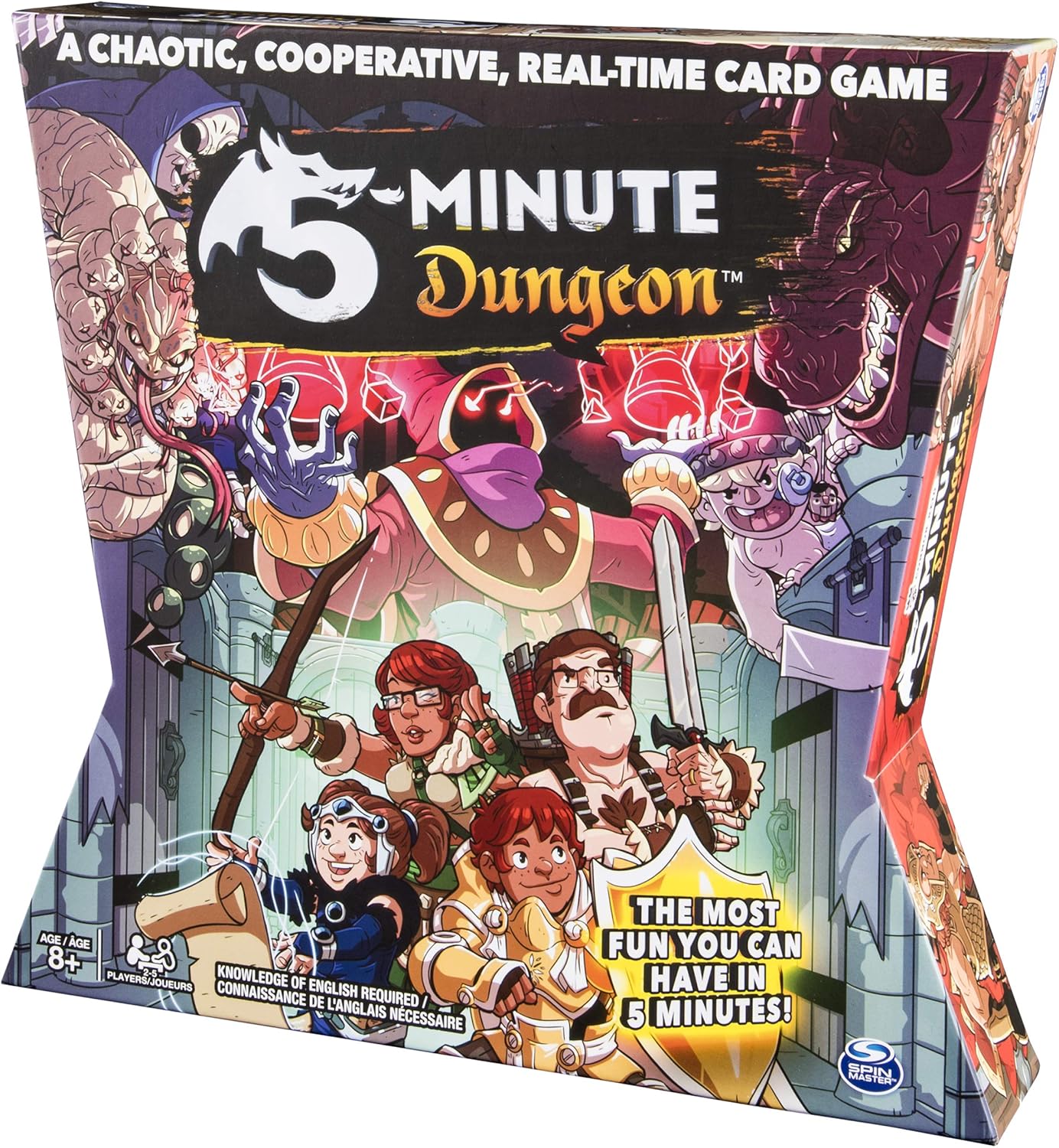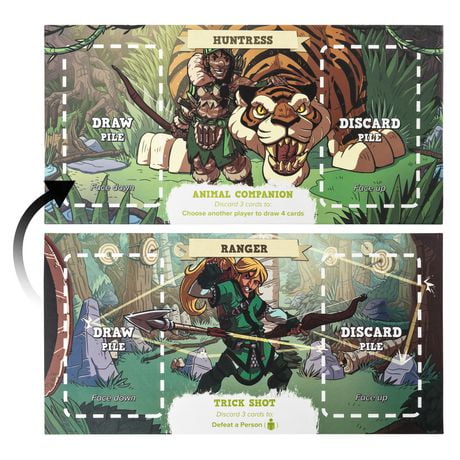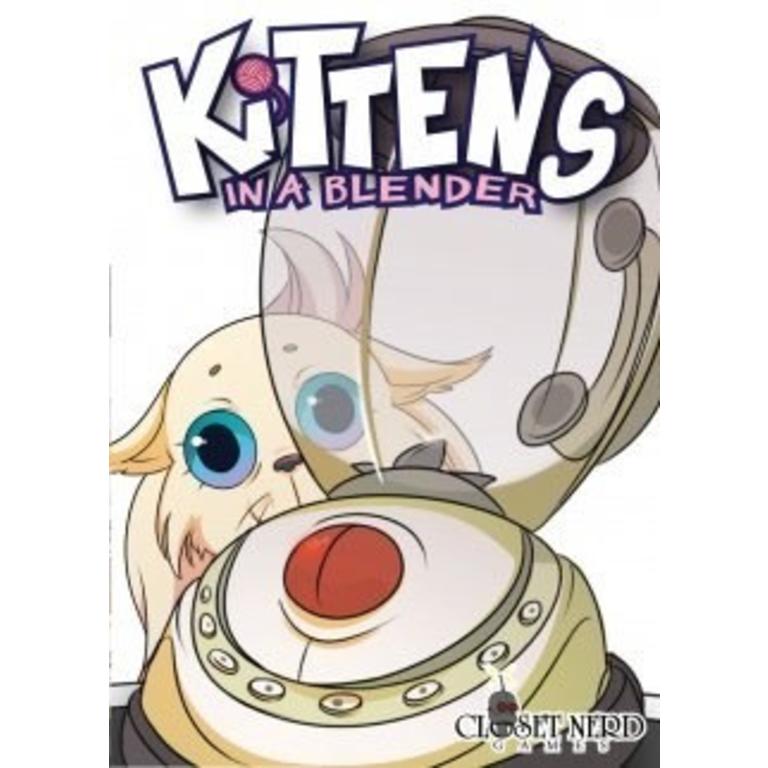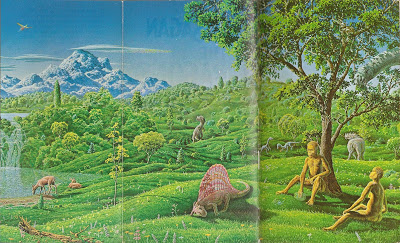I have been an avid board games fan since childhood. My father introduced me to the classic collection of board games including Chess, Snakes & Ladders, Checkers, Ludo etc. These board game sessions would often involve all the members of my family. Thus, it comes as no surprise that my favorite genre of board games would be those that were easy-to-play crowd pleasers.
In that category, I have to give a shout out to a good friend and colleague of mine who introduced me to 5-Minute Dungeon & Kittens in a Blender, two spectacularly fun board games that I intend to review today!
5-Minute Dungeon

5-Minute Dungeon is a co-op, real-time card game, and a chaotic one at that where players are provided five minutes to defeat the monsters and boss of a randomized dungeon and escape.
While this may sound like any other “beat the monster” game, what makes 5-Minute Dungeon fun is that communication and teamwork are critical to the survival of the party especially when there’s no actual time to form a plan or predict the dangers that may lie ahead. The randomized dungeon monsters prove a strong obstacle where one may even completely fail to reach the boss level. The game involves a lot of thinking on your feet.
If I were to put the two scenarios that are usually provided for those interested in playing the game:
(1) The smaller your party, the less randomized your obstacles become, the easier it is to strategize on your feet under a time limit, with the caveat that crossing certain obstacles eventually become an impossibility (without a strong hand in luck).
(2) The larger your party, the more randomized your obstacles become, the more difficult it is to strategize on your feet under a time limit, with the caveat that it is easier to succeed in the obstacles, even though failure is a persistent presence at every turn.

The gameplay is quite simple. Players generally assume the role of one of ten heroes, each holding special abilities and cards. Once the timer (5 min. limit) starts, you and your motley crew of wizards, thieves, and warriors etc. race to defeat all the monsters inside the dungeon.
Defeating a monster involves matching symbols from the hand with ones on the monster’s card. If you are successful in clearing the monsters in the dungeon, the game is by no means over, as a powerful dungeon boss awaits in the end. The players must then use their remaining hands to defeat the dungeon boss. If your hands fall short of the conditions to beat the boss, you restart the dungeon. Thus, you have to think and communicate with the other members of your party to have a balanced hand leading into the final battle. After the first boss is defeated, your adventures continue onward in the next dungeon and so on to the second boss. The timer is reset at each cycle, and every subsequent dungeon gets harder (there are a total of five dungeons to clear).
The game is pure fun, and very entertaining. Repetitive failures at clearing a dungeon do not lower the entertainment factor thanks to the randomized nature of the obstacles (via the shuffling of the cards). Finding balance within your party is mighty important. While taking inspiration from expansive RPG board games like Dungeons & Dragons, 5-Minute Dungeon provides its own twist in a faster, and chaotic gaming environment. Just beware that the game can turn into a shout-fest the longer it lasts and the larger your party, so make sure to have a warm drink nearby for a game that may inevitably result in a sore throat from all the laughter and shouting.
Kittens in a Blender

This is a twisted game especially if one considers themselves a kitten lover. Another fast-paced card game, Kittens in a Blender, is pretty much exactly how it sounds and has players working to save all their own kittens from a gruesome ending. Victory is defined by saving one’s precious litter of kittens but can also come with the caveat of losing a few to the blender! The objective is to save one’s own kittens while sending your opponents’ kittens to the blender.
The game-play is very simple with players taking turns to move, switch, and discard their kittens, as well as their opponents’ either to the doom they await in The Blender, the temporary neutral-zone that is The Counter, or the safe hamlet of The Box. What makes it interesting is that players can just as easily transfer their opponents’ kittens from The Box to either The Counter or The Blender while simultaneously saving their own. This is pretty much the aggravation factor in the game.
/pic1179231.jpg)
Blend cards can be used to destroy the kittens in The Blender, saving the kittens in The Box, and moving the kittens on The Counter into The Blender (which can be countered by another player’s Blend “Pulse” card). All in all, you get to direct your hatred toward the opponent of choice or just go all out and wreak havoc on just about everyone including your own kittens.
Alongside a variety of other cards including “Kittens in the Blender”, “The Box to the Blender” and many more there is a compendium of actions that make the game a hoot. The game ends when all 16 of the Blend cards have been played. Players count the number of saved kittens (+2 points) and blended kittens (-1 point), with the highest score being the winner.
Best of all, the box states, “A portion of the proceeds will be donated to a no kill cat shelter.”
For those board game fans among my readers, I would highly suggest these two games for an entertaining night at home or at your nearest board-game cafe.


